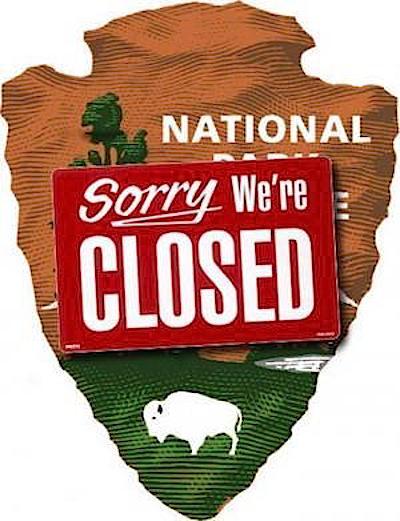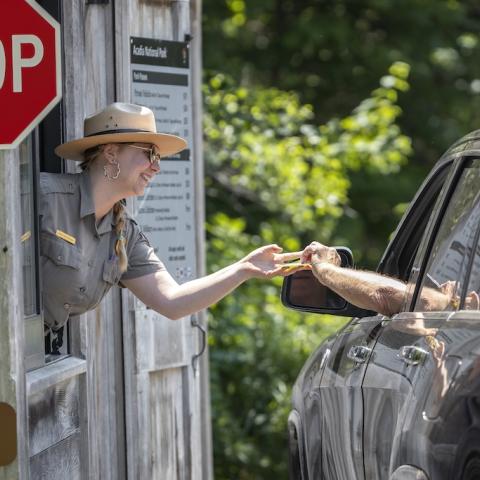
Is it coming to this again?
With a week left in the current fiscal year, and Congress seemingly unable to come to terms on how to fund the federal government, efforts are under way within the Interior Department, and National Park Service, to prepare for a government shutdown next week.
While the agencies are not going public with exact details of how they would operate in the event of a shutdown, the last shutdown in 2013 saw thousands of Park Service employees laid off, in effect, with skeleton crews left to operate the parks. Visitors were escorted out of the parks, gates were closed, and vacation, and even wedding, plans were ruined. Two years ago, of the agency's 24,645 employees, all but 3,266 were furloughed, according to the plan.
Park closures in 2013 were conducted quickly, with "day visitors ... instructed to leave the park immediately" and overnight visitors given two days to leave the parks.
In a letter sent Wednesday to members of the House and Senate, the National Parks Conservation Association said the 16-day government shutdown in 2013 forced the closure of all national park sites and that another shutdown would result in more than 770,000 visitors being turned away each day the parks are closed.
“A government shutdown only brings into focus the families, communities, businesses and dedicated park rangers who struggle while our national treasures are shuttered,” NPCA President Clark Bunting wrote in the letter, noting that the 2013 government shutdown turned away almost eight million visitors, costing local communities nearly a half billion dollars in lost revenue. “Today the shutdown would once again be a sad chapter in the struggle to adequately fund our nation’s needs, including America’s national parks.”
Now as in 2013, the looming possibility of a shutdown comes as Eastern parks such as Shenandoah National Park, Great Smoky Mountains National Park, the Blue Ridge Parkway, Acadia National Park, and many others are gearing up for the peak leaf-peeping time of year. While some states were able to come up with the money to keep national parks in their states open -- Utah, for instance, shouldered the cost of keeping Arches, Bryce Canyon, Canyonlands, Capitol Reef, and Zion national parks open, and Colorado paid to keep Rocky Mountain National Park open -- those states still have not recouped the costs from the federal government.
In the letter (attached below) the NPCA said the prospect of another government shutdown comes at a difficult time for the National Park Service, which has had its operating budget cut by more than 7 percent over the last five years, in today’s dollars. These cuts have resulted in fewer rangers to protect parks and greet the public while leaving roads, trails, visitor centers and other infrastructure elements crumbling.
With a maintenance backlog that has grown to $11.5 billion due to a significant decline in construction funding and insufficient investments in the transportation funding bill, Mr. Bunting said the only way to get parks back on track is to restore park funding to pre-sequester levels and provide the funding parks need to prepare for the centennial year and beyond.
“Rather than threatening another damaging shutdown, Congress should be preparing for the influx of visitors expected during the national parks’ 2016 centennial year by pursuing a deal that can allow for needed restoration of funding for national parks,” he wrote. “We urge swift passage of a bipartisan continuing resolution clean of environmentally damaging policy riders, followed by a committed bipartisan effort to enact a budget deal that replaces the sequester and allows for the needed restoration of funding for the National Park Service in Fiscal Year 2016.”




 Support Essential Coverage of Essential Places
Support Essential Coverage of Essential Places







Comments
Being from the beautiful state of N.C. we have many beautiful parks and folks we know that work in them. We will not forget the people in Congress that caused such hardship to our state by voting these obstructionist out of office. This will be a top priority.